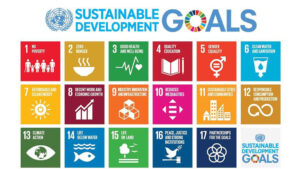Volunteer Impact Reporting: Why and How to Measure the Value of Volunteers
Are you looking for a way to accurately build a volunteer impact report that shows what your contributors have helped your programs and clients accomplish? We hear it all the time: measuring volunteer impact (and then showing that impact) can be a tricky skill to master!
In order to succeed, you will need to define volunteer work and learn how you can explain to key stakeholders the value volunteers bring to your organization.
This is where having consistent, credible data on hand comes in!
However, if you are new to volunteer impact reporting, there are many challenges to measuring impact in this way:
- Lack of time or resources
- Don’t ”get” the math
- Debates about methodology or what to focus on
- Unreliable tracking of cash & in-kind donations
- No clear market value for “outputs”
- Inconsistent documentation of volunteer time
- Over/underestimation of dollar value of volunteer time
- Investment in “looking poor” to gain support
- Worry about volunteer or staff perceptions
- Long-term impacts are expensive to assess
Despite these challenges, there are many compelling reasons why you should start measuring and reporting volunteer impact.
Read on and learn simple frameworks for documenting, assessing, and communicating impact — beyond simply volunteer hours and the value of volunteer time — that can also help your program improve and grow.
Defining Volunteer Work and Its Impact on Capacity Building
As a leader of volunteers, you might believe that you have a good handle on what constitutes volunteer work. However, the International Labour Organization (ILO) has recently begun to consider volunteer work as a larger part of the labor economy.
As such, they have recently published definitions and standards in relation to how volunteer work is measured.
The establishment of these standards will help you understand volunteer-based labor and help you compare your organization’s volunteer impact with other organizations in the community.
Here are some of the key definitions you should know:
Volunteer Work: Production of goods or services performed without pay for time or work completed, non-compulsory, outside own family.
Two Main Types: Organization-based (with organization or community) or Direct (independent, “informal” volunteering) volunteer work.
Excluded from Volunteer Work: Employee volunteering during paid time, required for training programs or by courts, helping own family, or voting.
Active Volunteer: All people who perform volunteer work for at least one hour in the past four weeks or month.
Want to learn more? Check out the ILO’s Manual on the Measurement of Volunteer Work.
Ways to Measure Volunteerism
It’s important that leaders of volunteers first understand that volunteers at their organization contribute to the larger picture of volunteerism globally, then understand that there are many ways volunteerism is measured around the world.
In fact, the United Nations has developed a set of 17 goals which call upon all countries, developed and developing, in a global partnership of using volunteerism as a vehicle for ending poverty, fighting inequality and injustice, and tackling climate change by 2030.

You can learn more about the UN’s global goals here.
To attain these goals, volunteer leaders will need to stay engaged with measuring volunteer involvement at their organization.
Here are some ways you can measure volunteer impact:
- Scope and Scale of Volunteerism – Who, How, When, & Where it Takes Place
- Intrinsic Economic & Social Value of Volunteering
- Economic Estimates
- Wage Replacement
- Economic Returns
- Estimates of Lives Saved & Emotional Impact
- Social Benefits of Volunteering
- Social Capital
- Community Resilience
- Redressing Inequalities
- Impact on Volunteer Health & Well-being
- Economic Estimates
- Instrumental Value of Volunteering
- Contribution to Local Community Development Goals
- Contributions to the Global Sustainability Goals (SDGs)
- Effects of Volunteering Initiatives
- Efficacy of program
- Program results
Clearly volunteers add so much more than an extra pair of hands to your organization, so it’s time you start documenting a proven system to track and show volunteer impact.
Key Performance Metrics in Volunteer Impact Reporting
Volunteers play a crucial role in the social and economic development of their communities; yet, there is no set system volunteer managers can follow to measure their contributions and impact.
According to the ILO, there are six reasons why you want to start measuring volunteer impact:
- Volunteer work is sizable and creates significant economic value.
- A growing number of international organizations have come to recognize the contribution and importance of volunteer work.
- Volunteer work is of special importance to the labour force statistical community.
- Not measuring volunteer impact can impede policy-making and our general understanding of labour dynamics.
- Existing data systems fail to capture volunteer work, but also, they do so inconsistently.
- Establishing a system for improving the data available on volunteer work will thus serve a variety of useful purposes.
Specifically, here are some reasons why you might want to track volunteer impact at YOUR organization:
- To paint a more accurate picture of the volunteer effort
- To build buy-in for deeper volunteer involvement inside and outside the organization
- To more deeply assess your organization’s assets and liabilities
- To determine the impact of program changes over time
- To justify future investments in volunteer services
- To demonstrate effective use of financial contributions
- To provide evidence of community in-kind support for grant proposals
- To remove some of the guessing game & build trust
Calculating the Value of Volunteers

Attempts have been made to equate the economic value of a volunteer’s work with hourly wages for similar work in paid jobs, which can offer some valuable information to programs that want a quick and easy way to estimate dollar values.
Here’s a basic way you can calculate the value of volunteers:
Determine the estimated hourly wage of volunteer work according to your state here.
Then, calculate the dollar value of ALL of your volunteers, regardless of their role within your organization.
For example, the estimated value of volunteer time in Michigan is $25.79/hour.
So, if I was calculating the hours of my volunteers in Michigan, my calculation would look something like this:
- Louanne 24 hours
- Roger 67 hours
- Jorge 42 hours
- Tran 87 hours
= 220 hours
220 hours x $25.79 = $5,673.80
To add even more nuance to the value of volunteer time, each volunteer role can be equated with a “fair market value” wage.
First, determine the fair market value for your volunteer roles by using the U.S. Bureau of Labor and Statistics data for your state.
For example …
- Louanne is a web developer and volunteered 24 hours @ $29.92 per hour = $718.08
- Roger volunteers as a fundraiser and worked 67 hours @ $25.86 per hour = $1,732.62
- Jorge, your organizations health educator, volunteers for 42 hours @ $24.69 per hour = $1,036.98
- Tran an HR attorney, volunteers for 87 hours @ $49.66 per hour = $4,320.42
= 220 hours
220 hours = $7,808.10
However, this wage replacement approach to measuring volunteer impact has limitations.
Simply because volunteers contribute hours, doesn’t mean that they will have produced the intended outcomes.
Volunteers may not be as efficient or as productive as you had hoped, or they may not be completely aligned with your organization or program’s goals.
Enter, Return on Investment, or ROI.
Calculating ROI can have the added benefit of taking into consideration factors beyond volunteer hours.
This formula represents a more in-depth way to calculate the total contributions of volunteers and is commonly used by business to calculate ROI.
This calculation also generates a simple statement of value – for every $1 spent on volunteer support $X is returned.
For example …
- ($125 – $100)/$100 = .25 x 100 = 25% ROI
Or … for every $1 spent, 25¢ was returned - ($200 – $100)/$100 = 1 x 100 = 100% ROI
Or … you broke even - ($475 – $100)/$100 = 3.75 x 100 = 375% ROI
Or … for every $1 spent, $3.75 was returned
Here are some examples of costs you might use in your ROI calculations:
-
- Staff Salary
- Staff Benefits
- Travel
- Training/Conferences
- Supplies
- Equipment
- Volunteer Reimbursement
- Incentives/Recognition
- Insurance
- Background Checks
- Marketing
- Overhead
Here are some examples of gains you might use in your ROI calculations:
-
- Cash Contributions
- In-kind Donations
- Value of Volunteer Time
- Value of Pro Bono Service
- Money Saved (due to increased program efficiency)
- Money Saved (due to decreased crime, etc.)
- Value of Society
- Value to Community
- Benefit to Service
How to Evaluate your Volunteer Strategy to Pinpoint Areas of Improvement

You might hear volunteer management professionals debate two ways to measure outcomes: hours and wage vs. outcomes and impact.
But why not track both and use the info needed based on your audience and your needs in the moment?
Here are some pros and cons to using hours and wage estimates:
Pros – speaks a common language, can be impressive, helps track ROI, good topline for tracking impact of interventions
Cons – incomplete data (volunteer hours, correct wage rates), does not reflect impact of work, fear of replacing paid staff
Here are some pros and cons to using outcome indicators and impact tracking estimates:
Pros – multi-dimensional, easy to align with org/program goals, shows actual results & added value of volunteer work
Cons – time consuming (to develop, track & report), outputs vs. outcomes, very expensive to prove ultimate impacts
To demonstrate the added value of volunteers, think about what you are trying to “prove” and decide from there what you need to track.
Are you trying to show your leadership you have enough qualified volunteers available AND that they are being utilized to help your organization meet its goals? Start tracking capacity measures such as:
- Number of volunteers
- Total volunteer hours
- Average hours per volunteer per month
- % of total volunteer roles filled or open shifts completed
- % increase in volunteer leaders
Are you reporting out to leadership about the direct impact volunteer work has had on program goals and outcomes? Track productivity metrics such as:
- Volunteer retention satisfaction or referral rate
- # of service beneficiaries reached (or reduced waitlist)
- % grant or strategic plan outcomes achieved
Do you want to show that volunteers have an impact on the quality of life of those they serve & their own? Track results of your volunteer program such as:
- In-kind & cash resources generated by volunteers
- Changes in beneficiary & volunteer condition/status, knowledge/learning, or readiness
Once you determine what you want to measure and how you can measure it, a logic model can help you examine the impacts of volunteer services.
You can use a logic model to diagram and analyze your program’s inputs, outputs, and outcomes. For volunteer services, logic models may include outcomes for both those who benefit from the work of volunteers and the outcomes for volunteers themselves.
To learn more about logic models, check out this framework from the CDC.
Show Volunteer Program Value with the Quick Guide to Amazingly Simple Volunteer Impact & ROI
Volunteers add so much more to your organization than an extra pair of hands. They bring expertise, community connections, credibility, and high-quality care to some of your most critical initiatives.
What’s more, the ability of organizations to strategically leverage community assets and talent makes more resources available for everyone else in your organization.
Use the simple formula provided in our FREE [tip sheet], Quick Guide to Amazingly Simple Volunteer Impact & ROI, to track and communicate the return on investment of volunteer services to key stakeholders.










Leave A Comment